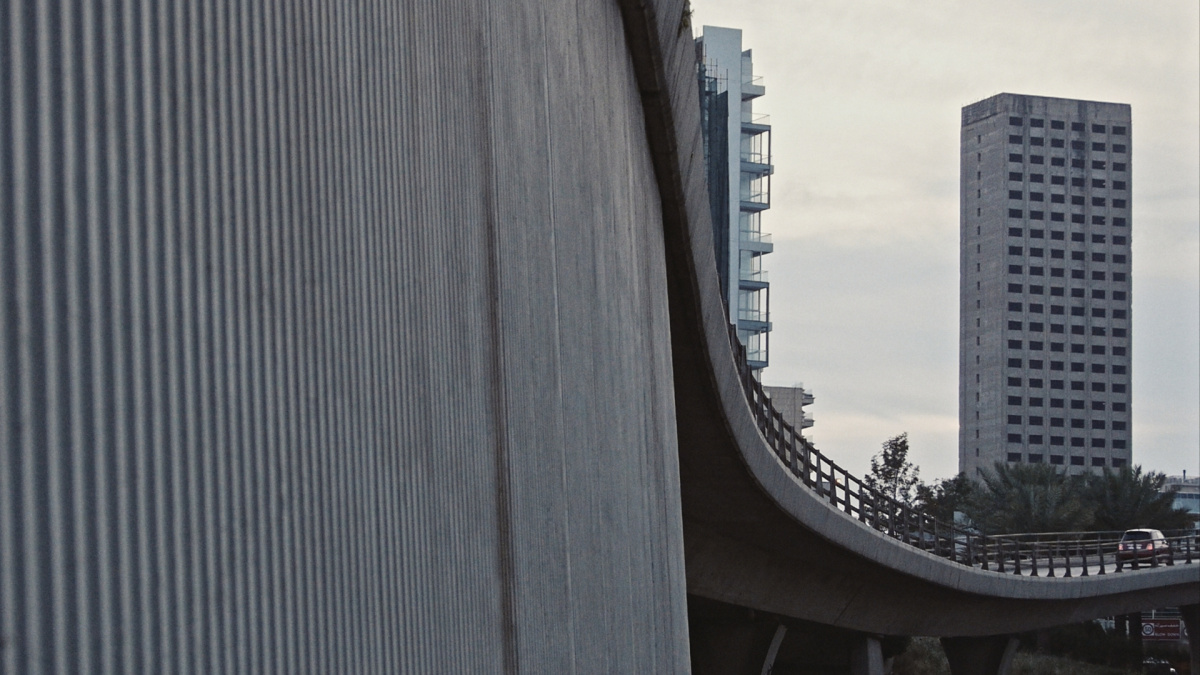What can we learn from a film by listening to it? Rana Eid’s Panoptic (2019) takes the viewer on a dark peregrination in the city of Beirut, and becomes a terrain on which images, sounds and voices superimpose and coalesce, as if to mirror the complexities and rhythms of the city itself.
→ Check all articles of this special
→ Download PDF with introduction and table of contents
In Panoptic, filmmaker Rana Eid narrates a letter addressed to her late father, a former general in the Lebanese army, in which she recounts memories with and of him. It is at once a final farewell to the father who is now gone and a testimony of the city that remains.
Throughout her film, Eid goes where no one has gone before, laying bare parts of the city inaccessible to the general public. The filmmaker exposes the overcrowded cells of a migrant detention center located under one of Beirut’s central highways; inserts her camera into the damp and abandoned floors of Burj el Murr, an architectural relic from the civil war; takes us underwater along the capital’s coastline, where tanks and various other military equipment was dumped into the sea; and travels in the eerie halls and basements of what was once the most notorious Syrian secret service torture center, the Beau Rivage hotel.
The Past Lurking Beneath the Surface
What we believe is out of sight – and most likely out of mind – for most of Beirut’s residents surfaces across Eid’s film. In a succession of scenes, archival images of the civil war(s) (1975–1990) are superimposed on images of the present. By showing them emerging out of the darkness of the sites she visits, Eid confronts us with a violent past that we want to believe is long gone but that remains lurking beneath the surface of the image – and with the reality of Lebanon’s socio-political condition prior to the October 17th uprisings in 2019.
In the same manner, Eid’s soundtrack overlays her voice – through a narration of the histories of the spaces depicted, her relationship with her father, and her experience of the war – with the sonic field of the present. In place of archival sounds or songs, her voice alone bears testimony to the past in audio form. The narration is discontinuous, leaving room for intricate layers of the ubiquitous (the calls to prayer and car horns) and the unheard (the prayers and chants of detained migrant women). The film’s soundtrack – both the original score and the sound design – unfolds a parallel film wherein Eid invites us to listen before we watch.
The film begins with a blackout that lasts a few minutes. An ominous drone creeps in while other sounds, like the call of a muezzin or the surge of a man giving a speech, are introduced. Throughout the film, Eid underscores the importance of listening. The soundtrack attunes the viewer to the singing voices of women in the detention center under the bridge, the raucous voices flooding the public square, and the gritty urban soundscape of the city.
All-Hearing and All-Seeing
In Panoptic, we never hear a single sound, musical score, or voice at a time, and no sound is muted for the sake of another. Sounds recede into the background, just as images do, but neither really fades away. Composed by Nadim Mishlawi, the musical score is woven seamlessly into the lush sequence of sounds, as if to reflect the musicality of the city. In that regard, the film is all-hearing as much as it is all-seeing.
By superimposing two worlds – the past and the present – in images, they are depicted as inseparable. The sound does the same by auscultating the visceral qualities that emanate from the city, its people, and those it imprisons or kills. Eid captures moments of extreme intimacy, communion, even ecstasy, yet the dark undertones of the sounds never diminish. Listening to Panoptic is as poignant as watching it. The compelling sonic space interplays between the soundtrack, the narration and the music, between what (and who) is below and above ground, between past and present, moving through a personal history and an unresolved national past.

